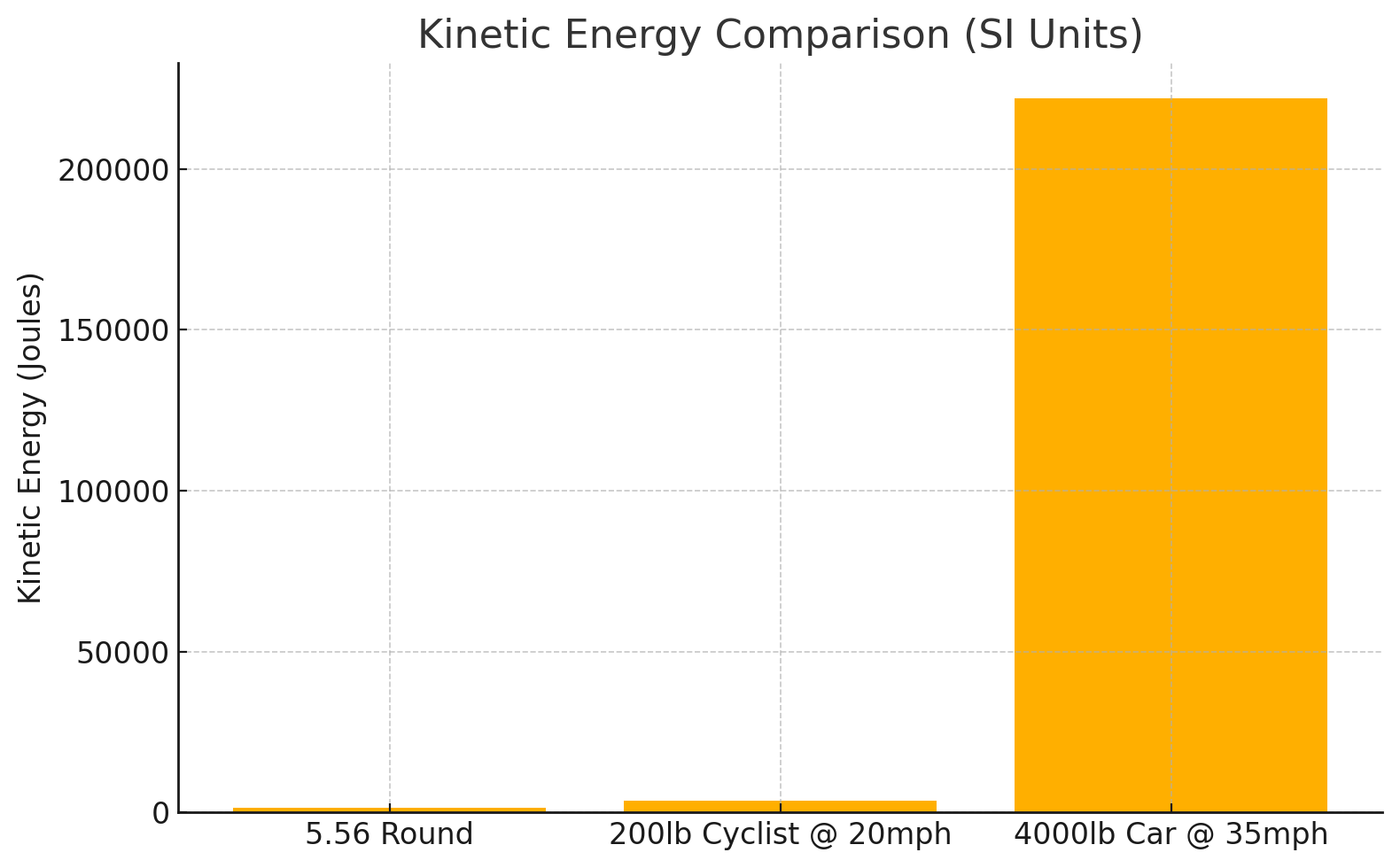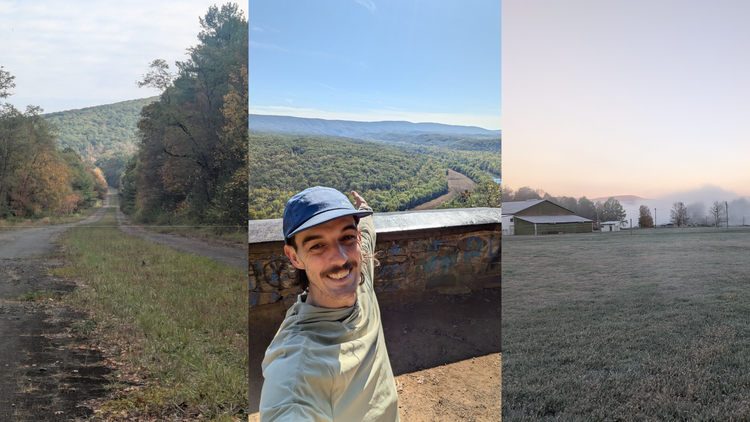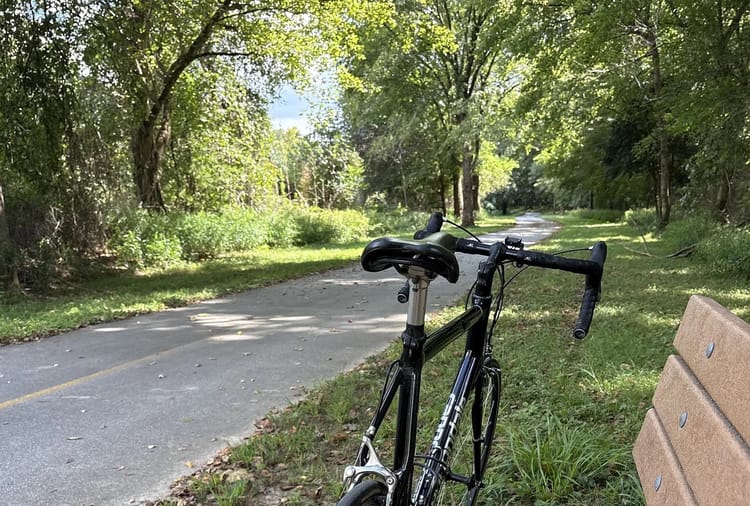A Tale of Three Kinetic Energies: Evaluating Automobile Lethality

This idea has been in the "drafts" bin for a while but I think it's finally time to show it to the world. Between this article my friend Ethan sent me (after we lobbied a City Councilmember for a better tactical urbanism policy) and my dad calling me from California, saying "I'm really starting to see how cars don't actually provide the freedom they advertise, and actually kind of imprison us," I feel like now is the time to bring it into the sunlight.

Some people know that I went to the Naval Academy for a period of time. I didn't graduate, but I did complete most of the higher-level courses required to earn a B.S. in Weapons and Robotics Control Systems Engineering. I ended up graduating from the University of Florida with a degree in Mech E, probably because they didn't offer much in the way of weapons majors.


One of many dualities of the Naval Academy
One of the classes I took at the Academy was colloquially called "Weapons." I forget the full name, but we all called it Weapons.
In this class, in between sleep-deprived nods off to neverland, I learned that an evaluation of a weapon's lethality is based largely on how much energy the weapon produces. There are other factors, sure, but the biggest rock in the jar is "How much energy does this bomb/mine/missile/projectile release at once?"
A year or two before that, I sat in physics class and learned for the fortieth time that kinetic energy of a moving object equals one-half of the mass of the object times the velocity squared. In math terms:
KE = 0.5mv2
Cyclist
The kinetic energy of a 180lb cyclist and their 20lb bike is 200lbs, or 90.72kg.
A cyclist at an average velocity of 20 miles per hour, or 8.94 meters per second, carries a kinetic energy of 3626.5 J, or just over 3.6kJ. Kilojoules are commonly used as units of measure for weapon lethality.
Automobile
What about a car? ChatGPT says an average car weighs around 3-4,000lbs. Considering the sheer quantity of Big Boy Trucks I see every day, let's assume the average is around 4,000. Those beefy bois are pushing 7-8000lbs and surely move the scale.
Raleigh has a largely-ignored citywide speed limit of 35mph. Assuming drivers go the speed limit (and assuming a spherical cow, for those in the know) let's do a calculation for the car's KE.
In Engineeringland, this 4,000lb car moving at 35mph looks a lot like an 1814kg block moving at 15.64 m/s. Plugging this mass and velocity into our equation above, we get a kinetic energy of 222,000 J, or 222kJ of energy. That's a hefty weapon! And to think that everyday citizens operate these weapons far past the legal limit with no ramifications, under whatever chemical influence the Law can't nab them on, all because they passed a 15 minute test in high school.
Sounds crazy, huh? I have one last thing to share and then class will be dismissed for the weekend and you can all go enjoy your Friday in the quad.
AR-15
A bullet fired from an AR-15 – commonly 5.56 NATO rounds – weighs 3.6 grams, not including the casing, powder, and primer.
These bullets, when fired from a stock AR-15, fly at 914.4 m/s.
At that velocity, they carry 1504 J or 1.5 kJ of energy.

Remember: weapon lethality is calculated largely on energy output. Other factors, like shape, fuse, timing, and type can influence this, but at a base level, the energy release is the important part. Getting shot in the pinky toe won't kill you. Getting run into by a cyclist probably won't kill you, but I have seen someone get killed by walking in front of a pack of professional cyclists.
Getting hit by a car will probably kill you.
Cars are weapons, and they should be treated that way.
Enjoy your weekend.





Comments ()